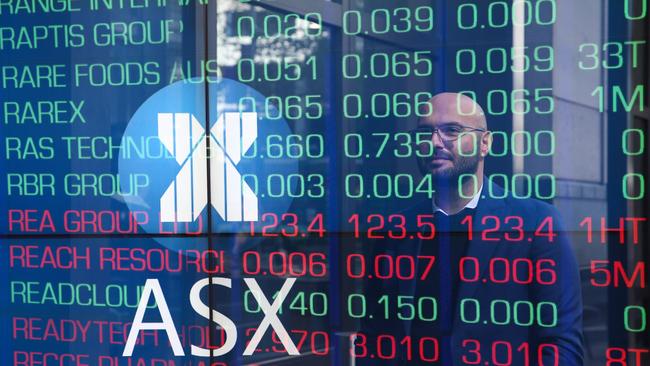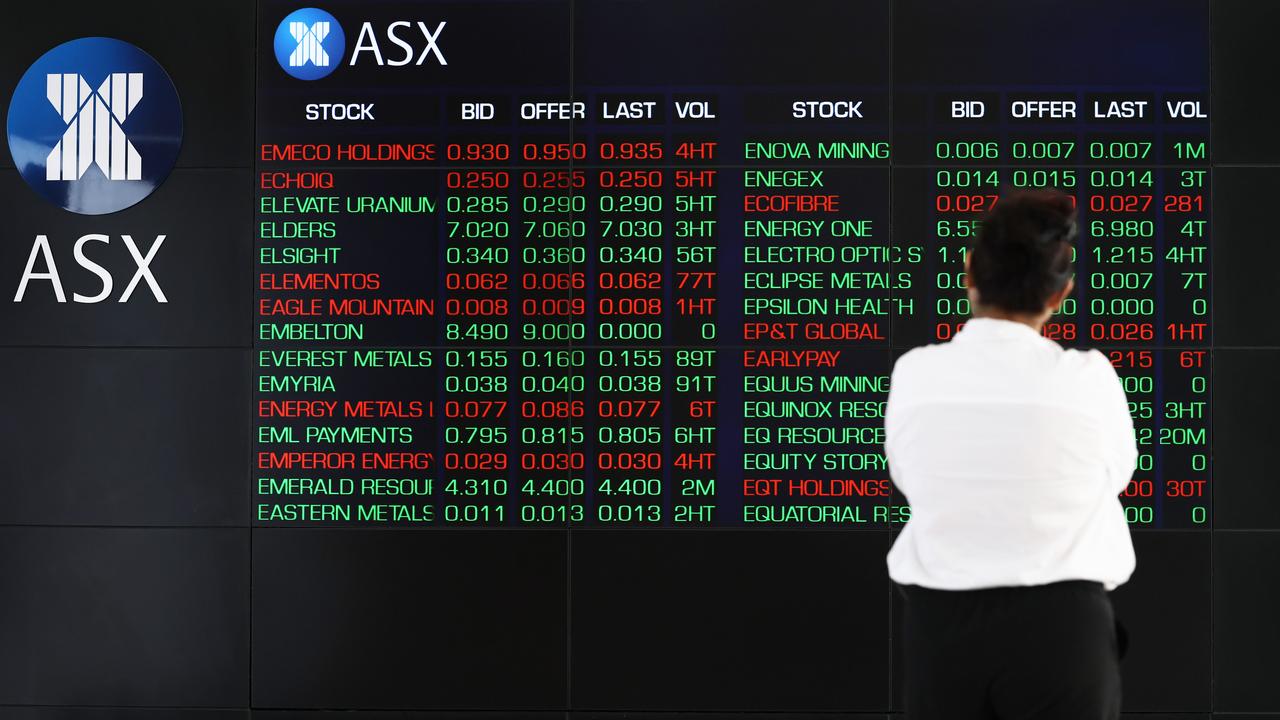Weaker commodity prices point to ASX 200 falling despite US gains
The Australian sharemarket is likely to start the week in the red as weaker commodity prices weigh on the mining and energy sectors.

The Australian sharemarket is set for a negative start on Monday despite an upbeat lead from the US, with weaker commodity prices likely to weigh on energy and mining giants amid persistent concerns over demand from China.
SPI futures are pointing to a 0.2 per cent fall at the start of trade, with declines in the price of gold, iron ore and oil all heaping pressure on miners, in a subdued start to the month.
“Broadly, the downdraft in commodity prices, mainly on the back of US dollar strength and persistent concerns around Chinese demand, particularly in the commodity space, will weigh on the Aussie market at the start of the week,” CommSec senior economist Ryan Felsman said.
WTI crude slumped 3.1 per cent on Friday to $US73.55 a barrel, while Brent slipped 2.4 per cent to $US76.93. Gold futures fell 1.3 per cent to $US2527.60 an ounce and iron ore futures lost 1.1 per cent to $US100.56 a tonne.
The negative pressure locally comes despite US sharemarkets ending last week on a positive note. The Dow finished Friday’s session up 0.6 per cent at 41,563.08, the S&P 500 rose 1 per cent to 5648.40 and the Nasdaq Composite finished the day up 1.1 per cent at 17,713.62.
US markets were buoyed by official data on Friday which showed the US Federal Reserve’s preferred measure of inflation – the personal consumption expenditures (PCE) price index – held steady on an annual basis in July at 2.5 per cent. It edged up on a monthly basis from 0.1 per cent in June to 0.2 per cent in July.
The figures were in line with market forecasts, raising expectations that the Fed will cut rates when it meets on September 17-18.
Traders raised bets of a 25bps rate reduction by the Fed next month to 69 per cent, with a 50bps cut possibility coming down to 31 per cent after the inflation report, according to the CME FedWatch tool.
Markets expect at least three rate cuts before the end of the year.
Olu Sonola, head of US economic research at Fitch Ratings, said that a quarter-percentage-point cut to interest rates was already “set in stone” for next month.
Locally in the week ahead, June quarter GDP data due on Wednesday is likely to show growth remains weak at around 0.2 per cent, quarter on quarter, resulting in annual growth dropping further to 0.9 per cent, year on year, according to AMP chief economist Shane Oliver.
Markets will also watch Australian Bureau of Statistics building approvals data on Monday, which is tipped to show growth of 2.8 per cent for July after a fall of 6.5 per cent in June.
On Tuesday, Australia’s June quarter current account balance is expected to show a deficit of $5bn, widening from $4.9bn in the March quarter.
Household spending figures due on Wednesday are tipped to show year-on-year growth of 3.3 per cent in July, boosted by tax cuts, from 3.1 per cent in June.





